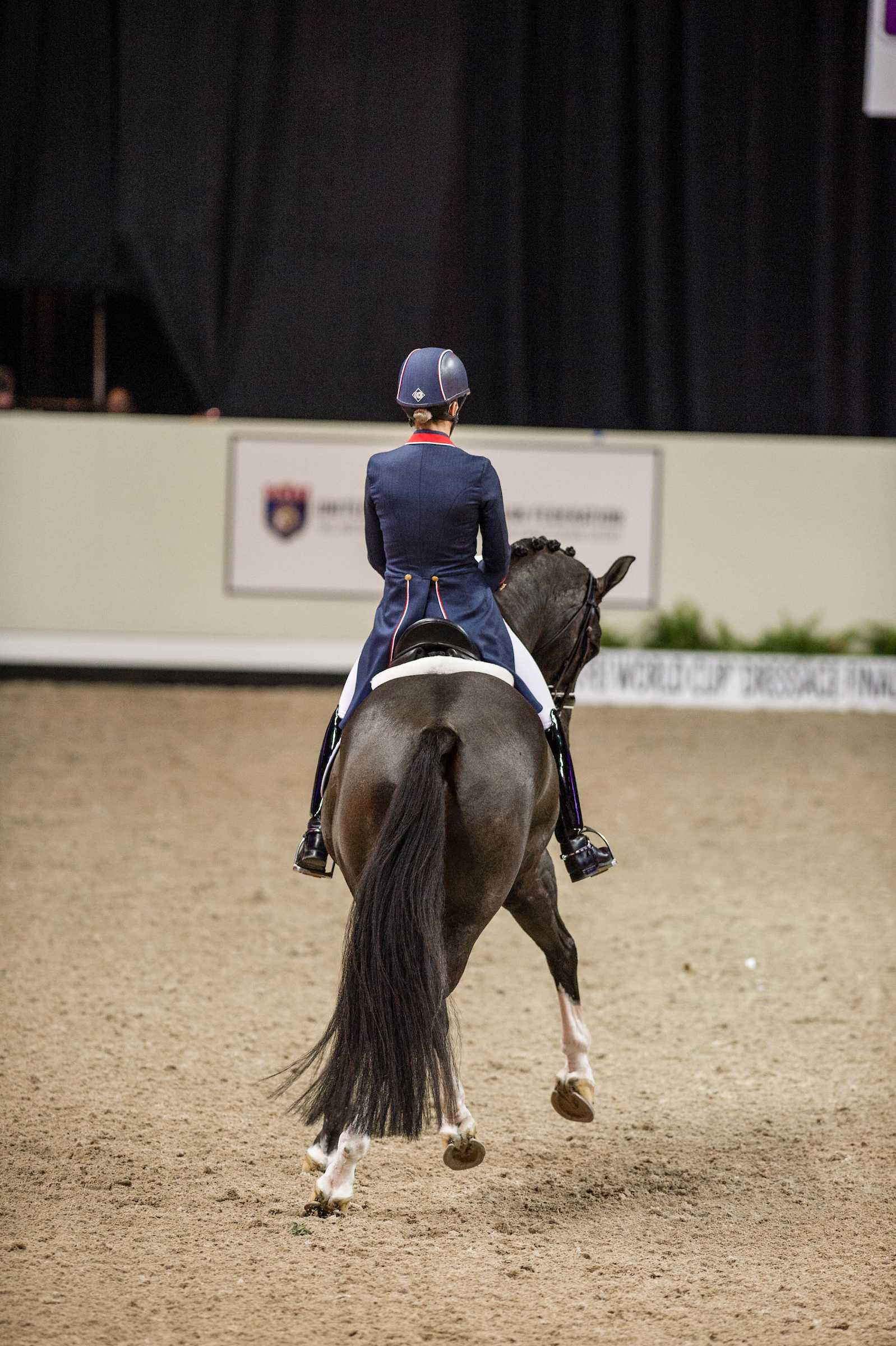When I started to learn the half pass, it was one of the hardest exercises for me to do. I wish I had known then that the half pass can be seen as a combination of exercises and that it can be taught this way. After breaking it up into two easier exercises—the shoulder-in and the leg yield—working on each of them and then putting them back together, I felt as if the half pass was one of the easiest things to do.
To read more about how to ride the shoulder-in, click here.
To learn more about riding the leg yield, click here.

Now, whenever I want to teach my horse or a student the half pass, I first make sure to take the time so they perfectly understand the leg yield parallel to the wall as well as the shoulder-in. In the leg yield, when we teach the horse to move off the inside leg into the outside rein, we concentrate on keeping him parallel and moving from one corner of the arena to the other. The horse’s body stays straight—the haunches stay right behind the forehand. In the shoulder-in, we teach the horse to move forward from the inside leg to the outside rein, which is required in the half pass, too. The parallel leg yielding has also given the horse the understanding of what will become the outside leg in the half pass.
In the half pass, we need qualities that we find in both exercises. If my horse is totally secure in both exercises, sensitive to the forward and sideways driving aids and moving well into the outside rein, I can balance my horse within these aids in the half pass.
I begin by riding with a shoulder-in feeling. My horse moves forward from my inside leg and is well on the outside rein. He also understands “sideways” from my outside leg. If I feel that my horse’s outside hind leg is lagging behind a bit, I think of leg yield: I straighten my horse a step and catch his haunches up. Then I can go back to shoulder-in positioning and back into the half pass.
Perfecting the shoulder-in and the leg yield also helped my body to better understand the half pass. Until then, I got all contorted and felt like a pretzel, but thinking of both the shoulder-in and the leg yield automatically puts my body in the right place.
This article first appeared in the November 2004 issue of Dressage Today.
Kathy Priest is a U.S. Dressage Federation silver and gold medalist. With the Hanoverian stallion Bordeaux, she won the Intermediaire I and placed second in the Prix St. Georges at the 1996 U.S. Equestrian Team (USET) Festival of Champions. The pair was also on the USET development list. Her current mount, Shostakovich, has won two CDIs at Prix St. Georges and Intermediaire I in 2004. Based in Versailles, Kentucky, she operates Woodspring Farm, a breeding and training facility, with her husband and veterinarian, Gary Priest, DVM.











